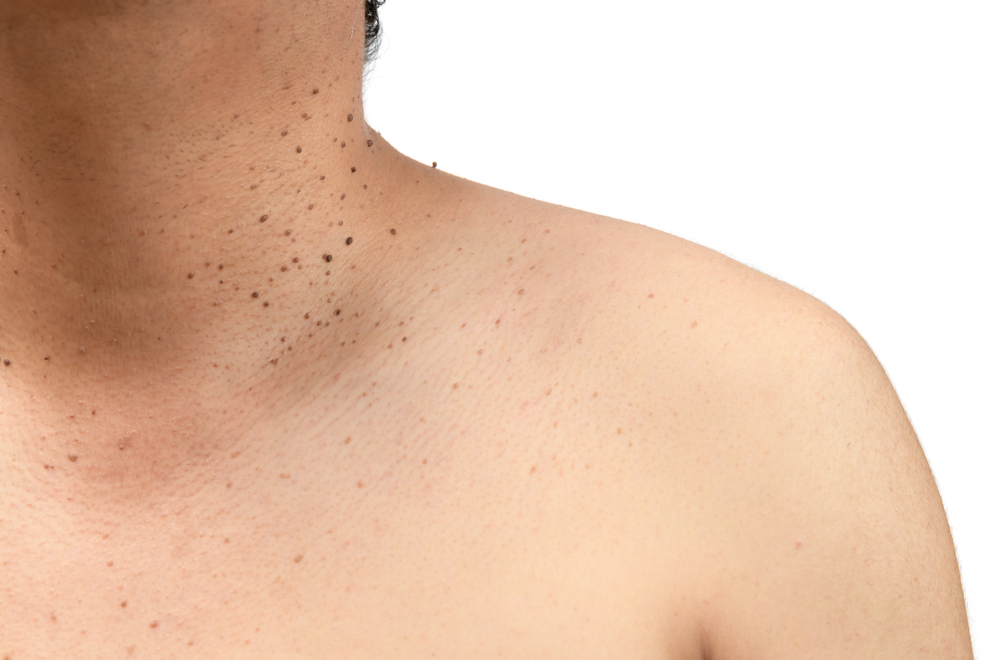Understanding Dermatosis Papulosa Nigra and Treatments

Dermatosis Papulosa Nigra, better known as DPN, is a common skin condition that is both benign and treatable. Individuals with darker skin tones are typically affected more than those with lighter skin. DPNs, often called moles, are harmless. Those who seek treatments for DPNs are mainly seeking treatment for cosmetic reasons only. Understanding what causes DPN, its symptoms, and the treatment options available can help those with this common skin condition decide what is best for them. Professional and licensed dermatologists can diagnose and treat DPN, but it is critical to seek someone skilled and experienced in this area.
What Exactly Is Dermatosis Papulosa Nigra?
DPN is the presence of small, raised lesions that are darker than the skin and are referred to as small moles by most. The small, dark lesions are typically on the neck, face, and upper torso. More common for those with darker skin, DPN is harmless but can create a lack of self-confidence in those who feel their DPN holds them back. DPN typically begins in adolescence and will grow in size and number of lesions with age. Although these small lesions do not cause harm to those with DPN, cosmetic concerns can be addressed by an experienced and licensed professional.
What Causes DPN?
There are still studies to determine precisely how DPN is caused, but there is strong evidence that there is a genetic component, which means that the skin condition runs in families. Often, those with DPN know other family members who also have the same skin condition. DPN is thought to be caused by overgrown skin cells (keratinocytes) or increased melanin production, which causes the pigment to be darker. It is also believed that hormone changes and sun exposure likely play a role in developing DPN lesions.
Symptoms of Dermatosis Papulosa Nigra
The most common signs of DPN are small, raised bumps or moles on the skin. These raised lesions often appear on the face, the neck, or the upper torso. DPN is more prevalent in those with darker skin tones. Children with this skin condition will experience larger size and number of lesions as they grow older. In any situation where an individual is experiencing lesions that are changing, they should consult a dermatologist to ensure there are no other skin concerns. Changing moles can indicate more severe skin concerns, which are better addressed sooner rather than later.
Whether an individual is seeking treatment for their child or themselves, seeking the help of a professional dermatologist experienced in darker skin tones is the best way to safely and effectively treat DPN. Dr. Sherrie Straughn and Buckhead Dermatology is dedicated to serving all her Atlanta clients and specializes in those with darker skin tones.
Treatment Options for DPN
Those with DPN may choose to have lesions removed for cosmetic reasons or if they become large enough that the lesions become irritated. The good news is that many treatment options yield positive, visible results. It is vital to seek the guidance of a dermatologist with experience diagnosing and treating DPN.
- Laser Therapy – laser therapy targets and breaks down melanin, aiding in lesions fading and disappearing. This treatment may require multiple office visits and will result in some redness immediately following each treatment.
- Cryotherapy – this therapy treatment uses freezing the lesions using nitrogen. The procedure is quick and done in the dermatologist’s office. A scab may form but will fall off on its own within a few weeks.
- Surgical Removal – this procedure requires using a scalpel to remove the lesions and leaves minimal scarring and heals within a few weeks.
- Electrocautery – this therapy burns the lesions and is performed at your local dermatologist’s office. It may be necessary to use a local anesthetic to help minimize any discomfort. Skin will scab and heal, leaving skin lesion-free.
- Topical – topical treatments may be recommended to fade skin lesions and shrink them over time. As expected, topical treatments are less invasive, but results take longer.
Not all dermatologists will offer the same treatment options. Determine which is your best option by scheduling a consultation with a local dermatologist.
Ways to Prevent and Minimize Symptoms of DPN
Due to the genetic component of Dermatosis Papulosa Nigra, in some cases, it is not possible to prevent the condition. However, there are a few measures people with DPN can take to reduce the risk of getting new lesions. First and foremost, protect the skin from the sun’s harmful UV rays. Sun exposure can worsen the condition. Second, find and maintain a skincare routine that provides skin with what it needs to stay healthy. Third, continue to monitor lesions and visit a dermatologist if any lesions change size, shape, or color or become agitated.
If you have Dermatosis Papulosa Nigra (DPN) and are considering treatments, contact Buckhead Dermatology for an appointment, Dr. Sherrie Straughn has decades of experience helping clients find skincare solutions for DPN as well as other skin conditions.
